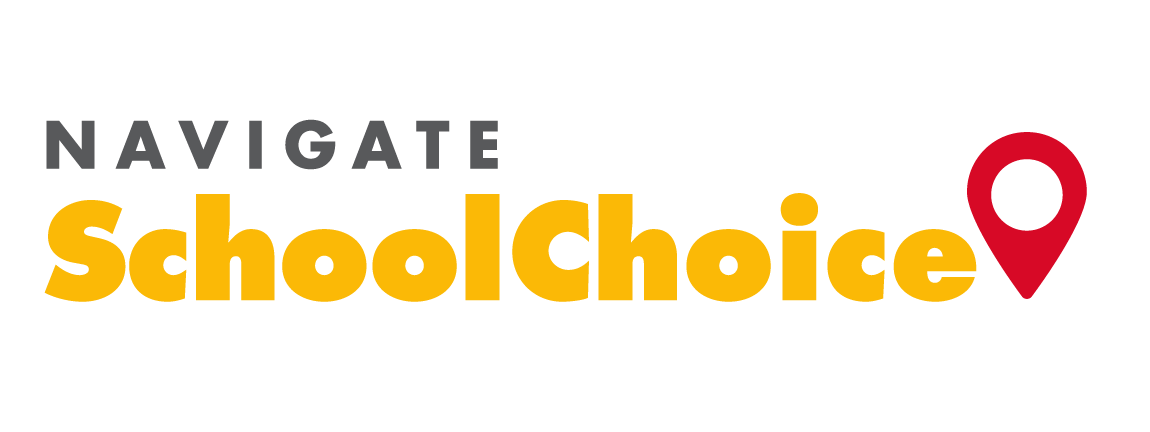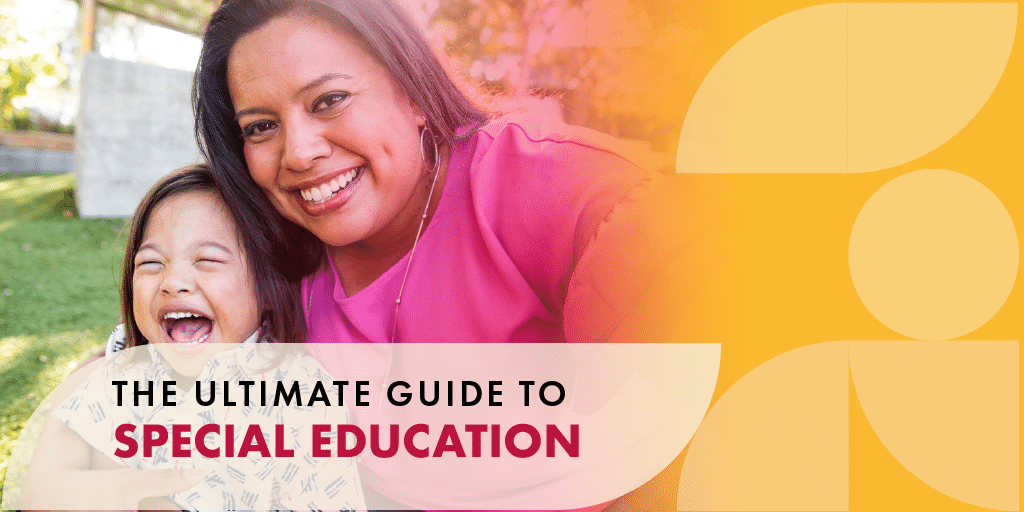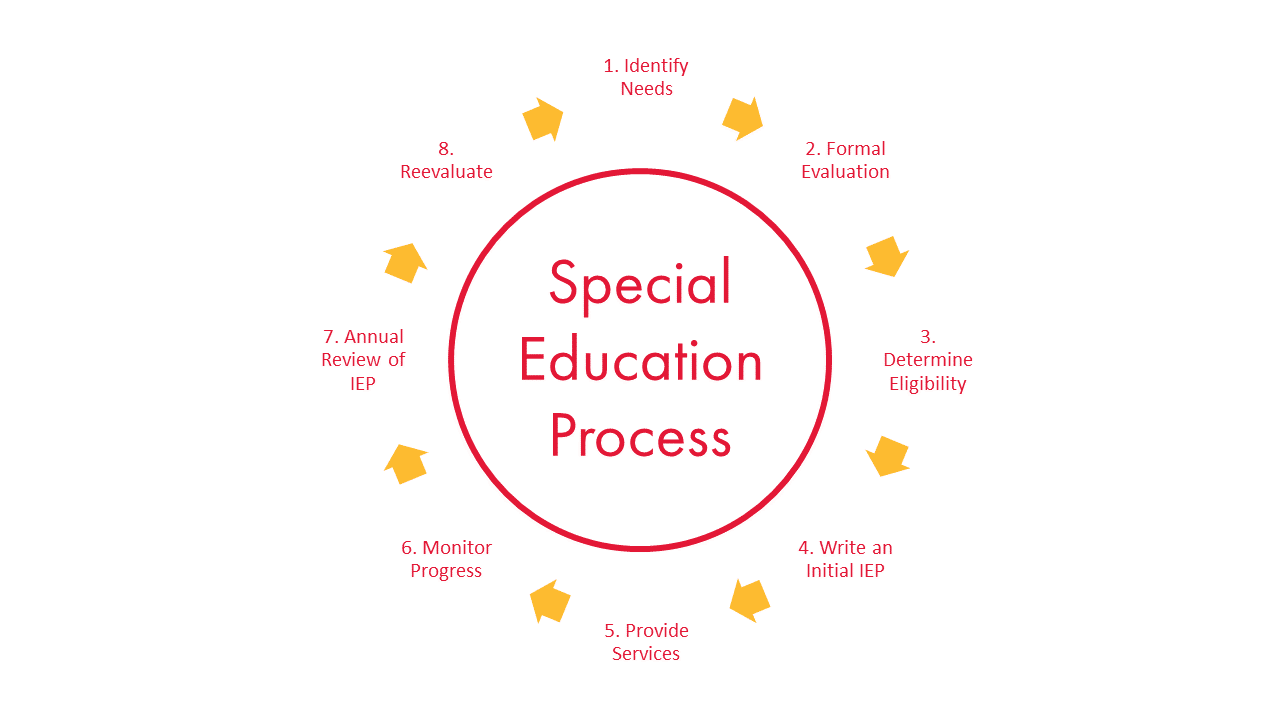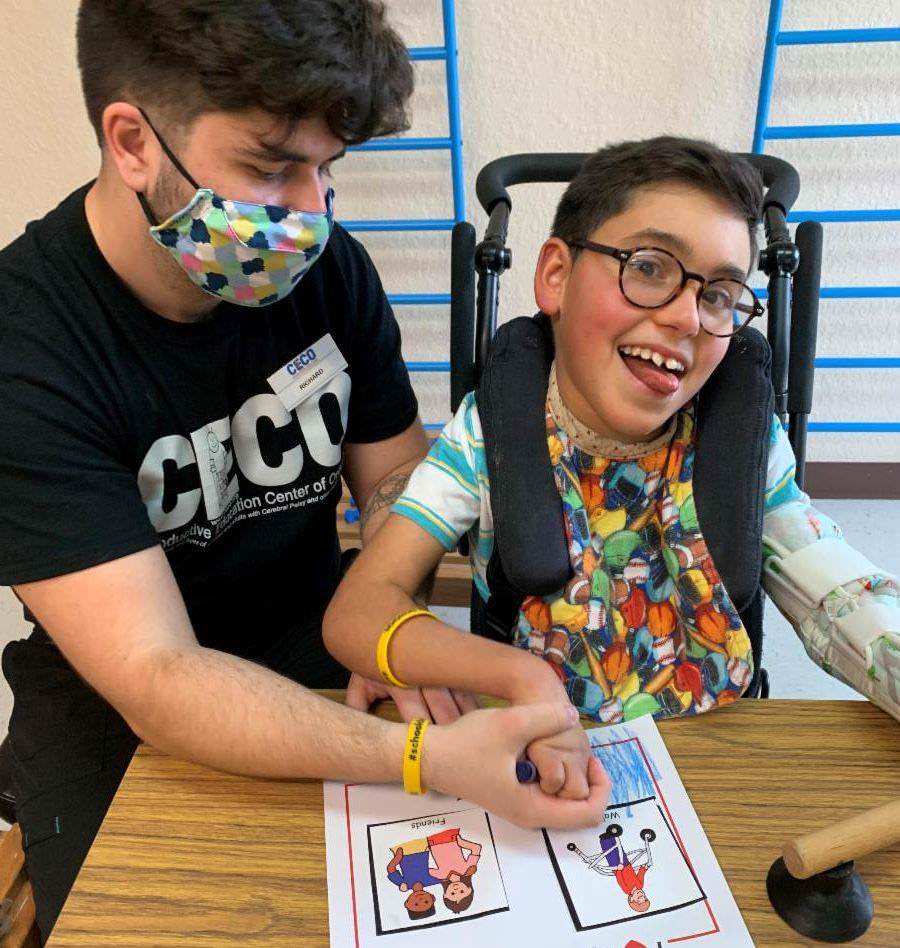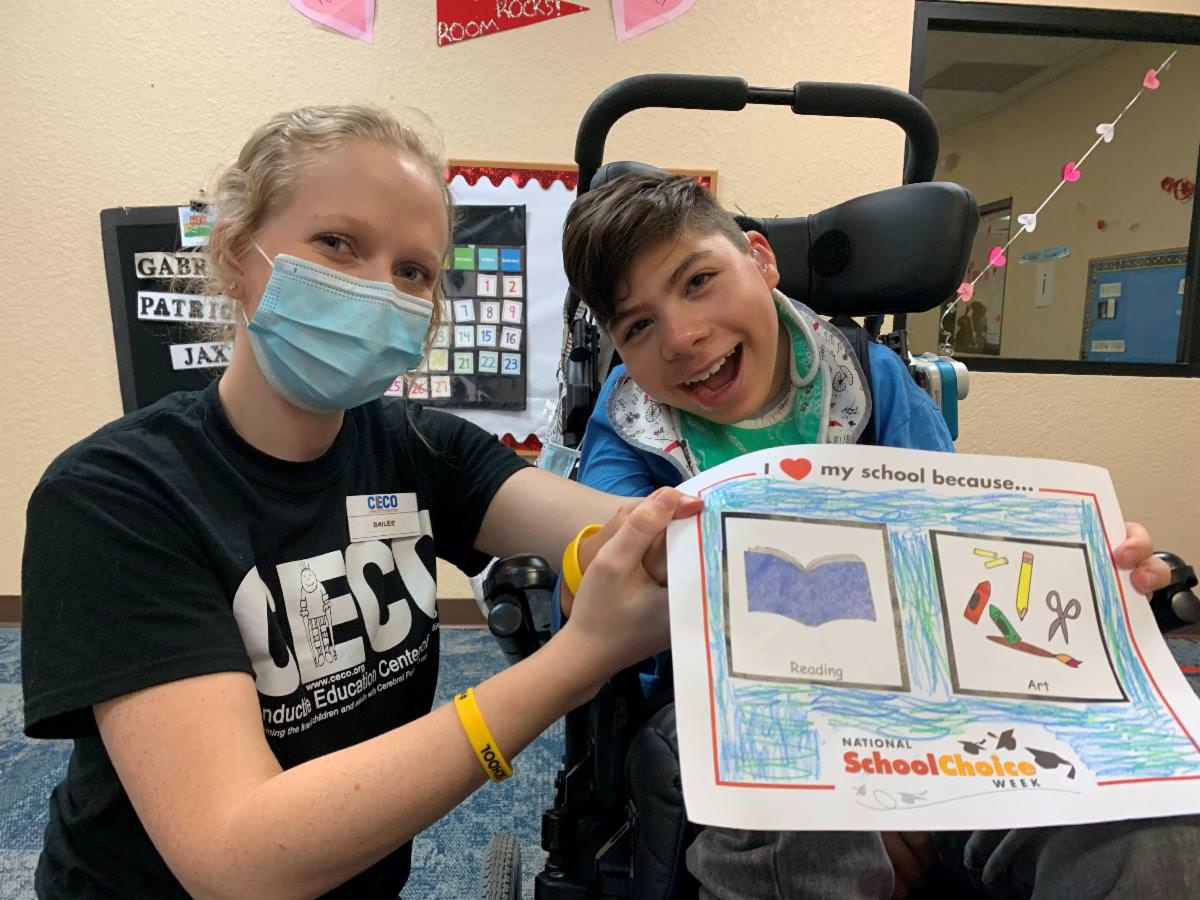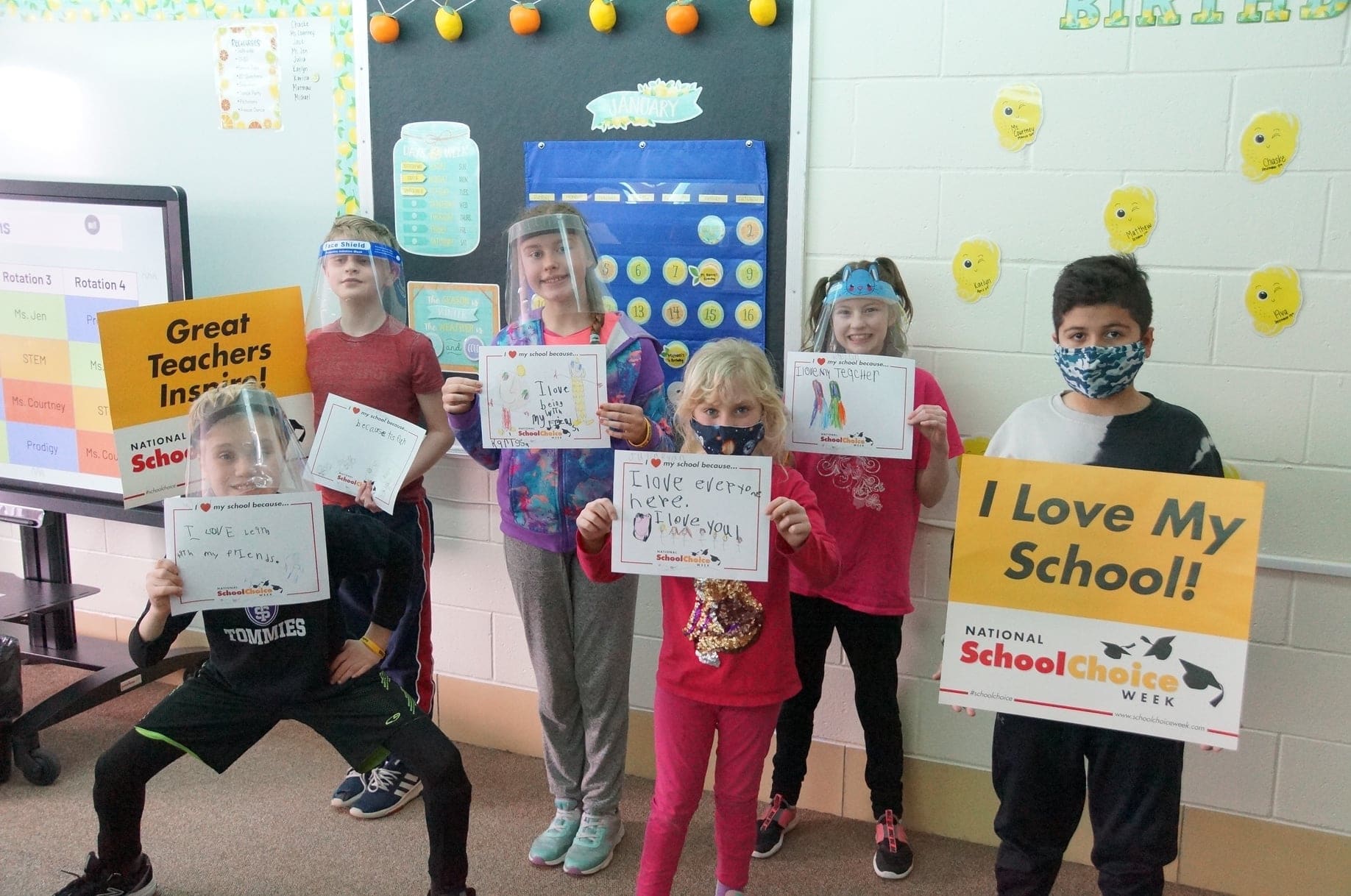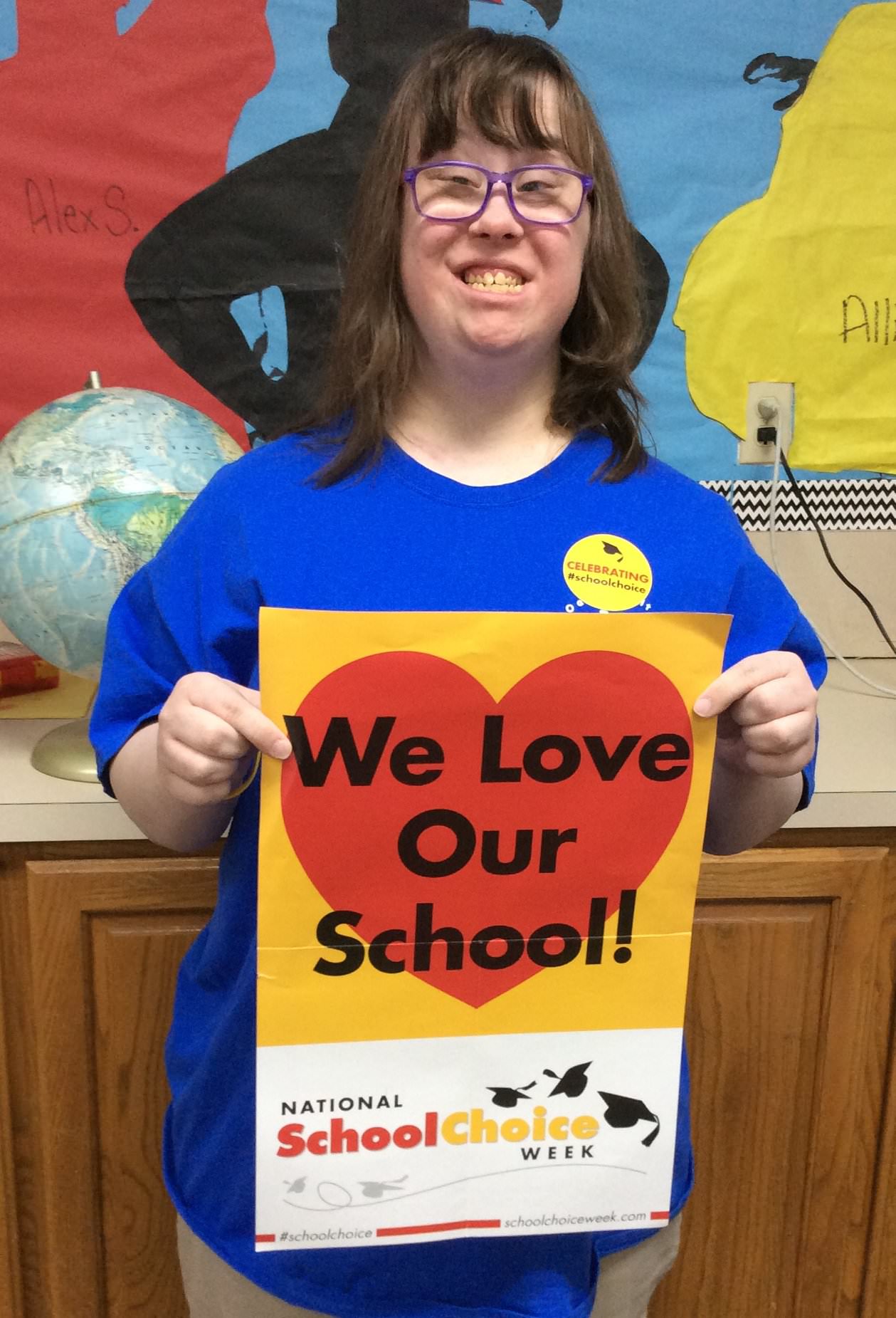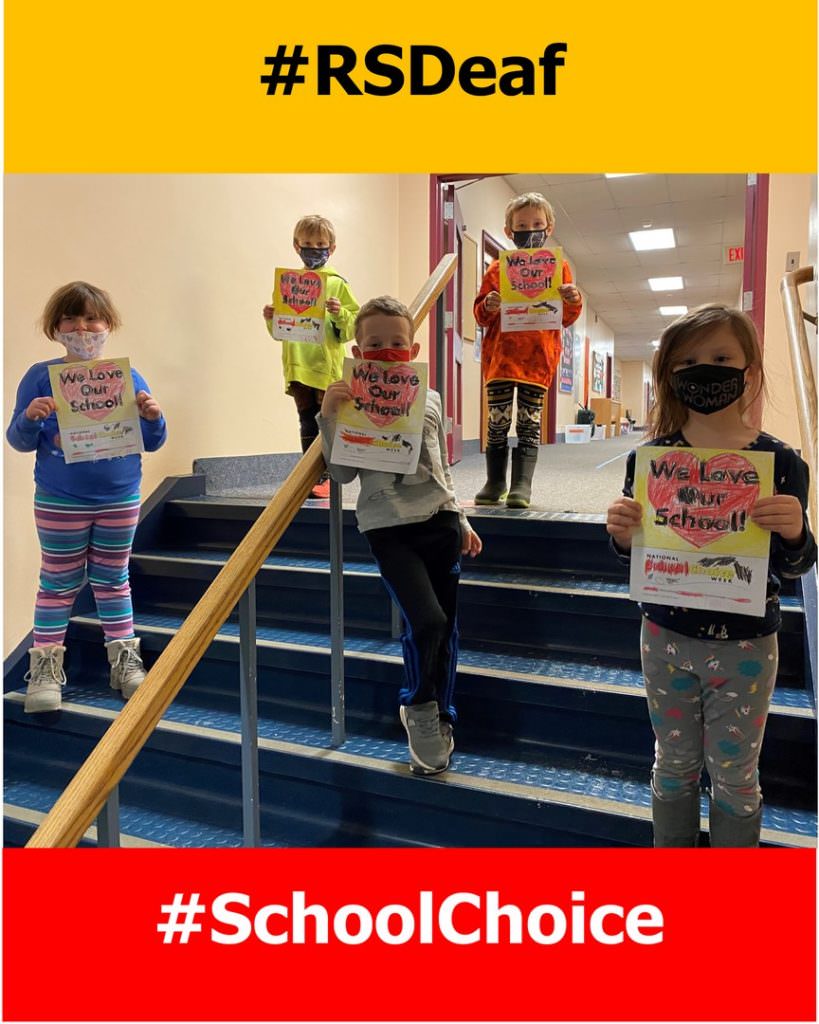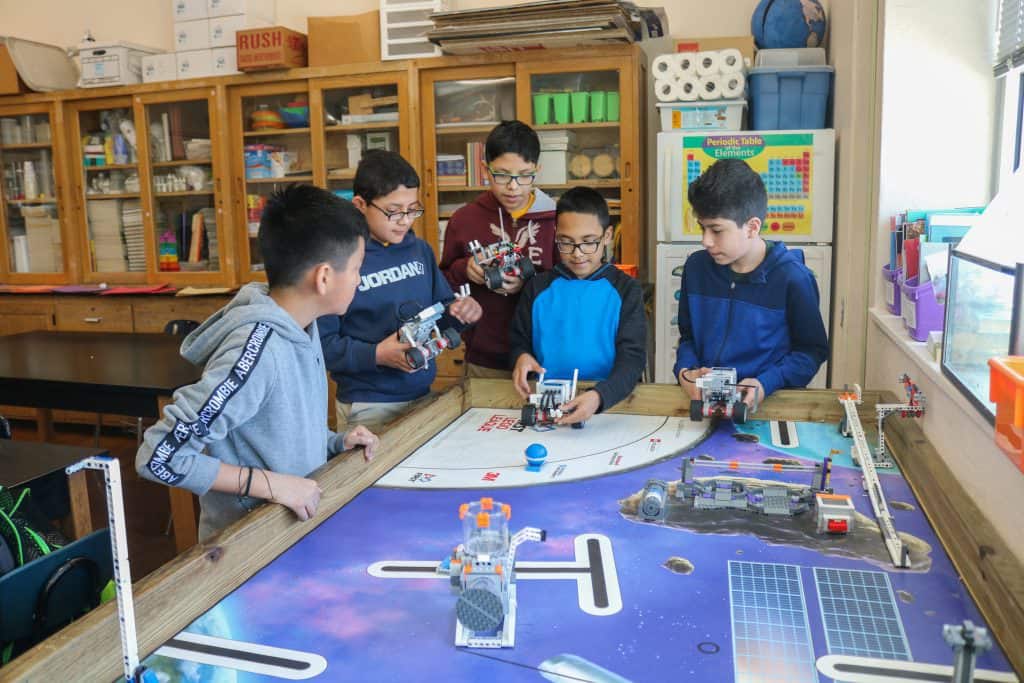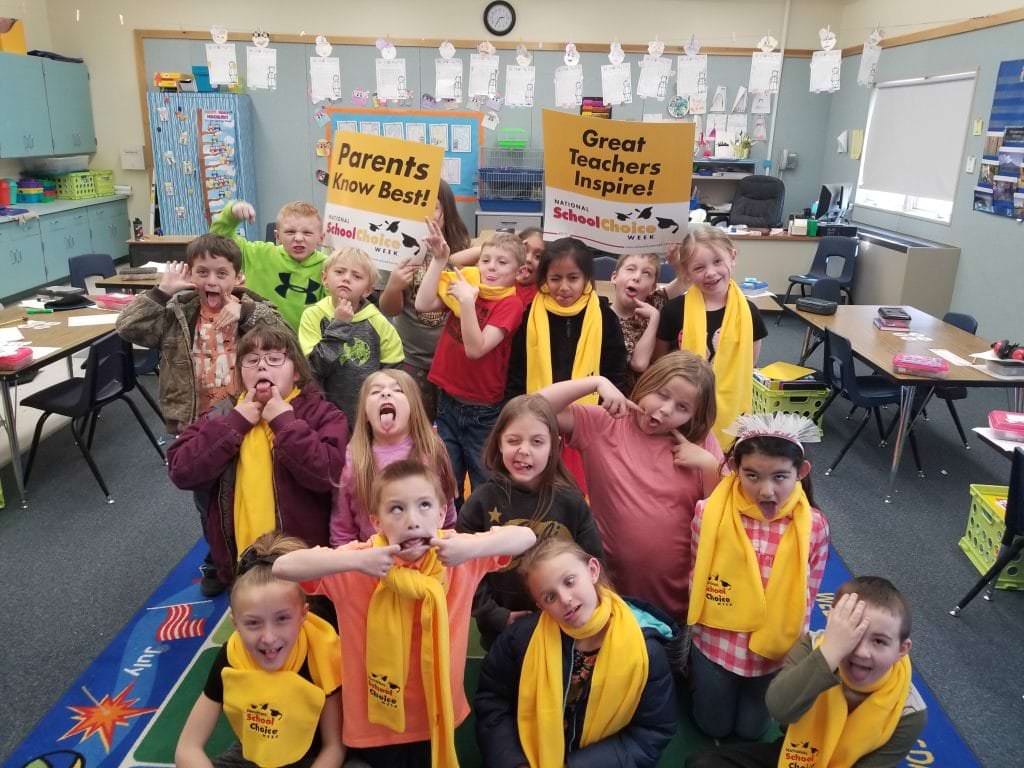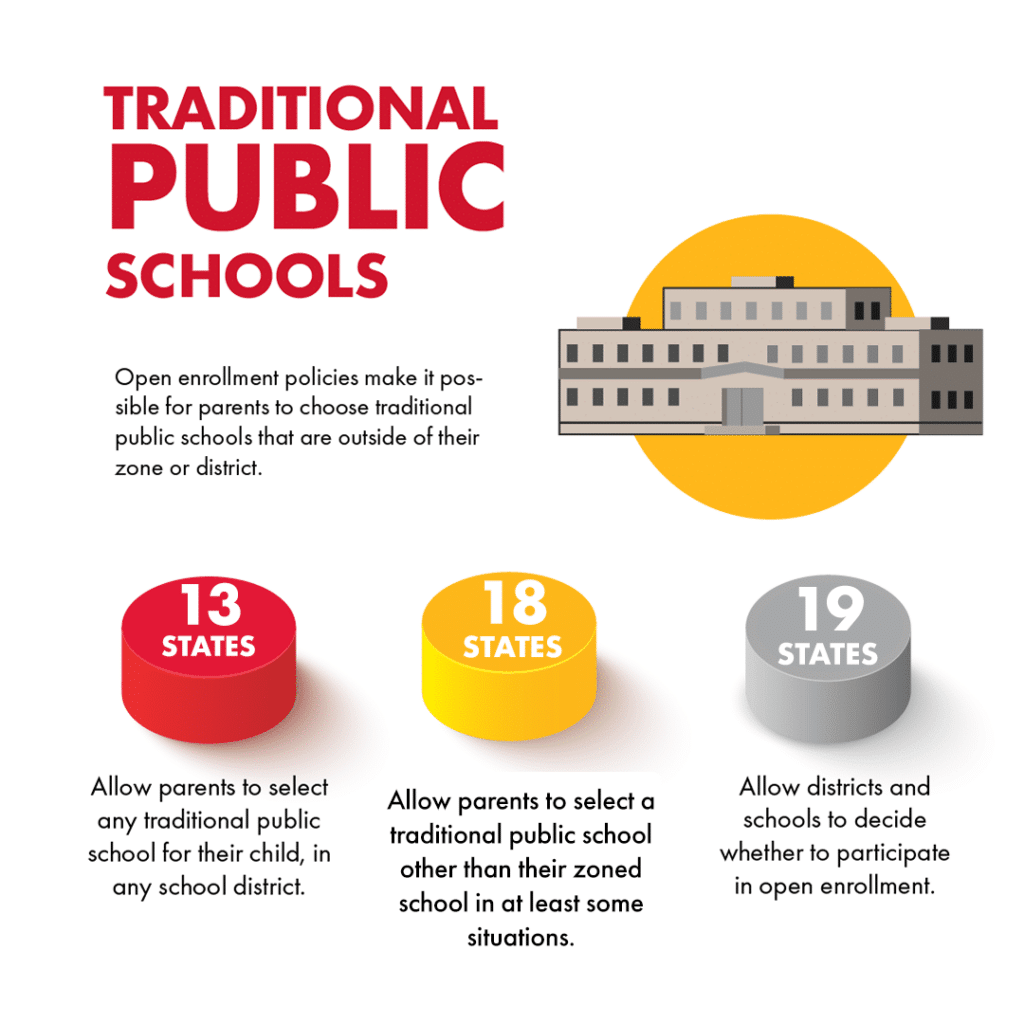Posted on Modified on Posted by National School Choice Week Team
Guide to School Options for Native American, Native Hawaiian, and Alaska Native Families
Created in cooperation with the National Indian Education Association
There are nearly one million Native American, Alaska Native, and Native Hawaiian students enrolled in K-12 U.S. educational programs. It is estimated that up to 90% of these students are enrolled in some part of the public school system. Many Native American and Alaska Native students are citizens of one of the 574 federally recognized tribes, villages, and pueblos and 64 state recognized tribes. Each of these Nations has their own unique culture, language, and value system, which are predicated on beliefs, history, and a unique knowledge-base. For the purposes of this guide, we will refer to this group as Natives. Native families face outsized barriers and impositions in education. The challenges, decisions, and opportunities in education for Native people are often complex.
As parents and caretakers of Native students, choosing the education that best fits the needs of your student and family is important. There are many things to consider, and the purpose of this guide is to provide information that will help with important decisions you face when trying to provide your child a connected, enriching, and meaningful education.
Together with the National Indian Education Association (NIEA), we’ve put together a state-specific look at how Native students and families can find the educational opportunities available to them. If you are a parent or student choosing a school and your Native heritage is top-of-mind in making your choice, this guide is for you.
A Unique Educational Context:
About 56 million acres in the United States are preserved as tribal lands. Today, a little less than half of Native families live on these reservations, the largest of which is the 16 million-acre Navajo Nation Reservation that spans parts of Arizona, New Mexico, and Utah. While all Native students are full citizens of the United States with the same rights as other citizens, they may also have special rights, such as hunting and fishing rights, access to sacred sites, or other unique dispensations reflecting the relationship between Native people and land.
The history of U.S. education policy toward Native students is fraught with broken promises, forced assimilation, and mistreatment. These wrongs were particularly severe in the Indian boarding schools, which the National Indian Education Association describes as:
“…Often overcrowded, hostile, and propagat[ing] the emotional, physical, sexual, and mental abuse of Native children. The forcible removal of children from families into these schools was a deliberate process. By keeping children from their parents and their traditional culture, a division was created between the ‘old’ and ‘new’ worlds. Many times, when children returned to their families, they were no longer able to communicate in their Native languages, but families that refused to send their children to these schools were often penalized with jail time or the withholding of government rations.”
These past wrongs are the root cause of disassociation from and disconnection to education in Native American communities, families, and tribes. It has been widely documented that Native youth today face unique challenges both at home and at school. These include a higher youth suicide rate, a higher likelihood to experience violent crimes, a higher likelihood to be designated with a disability, and a lower likelihood of access to Advanced Placement and college prep courses in high school. While these challenges to educational opportunity for Native students were strikingly documented in the 1969 Senate report, “Indian Education: A National Tragedy–A National Challenge,” many persist even today, more than 50 years after the report.
Over the last few decades, both state governments and the federal government have passed laws to improve learning opportunities for Native families. In 2006, for example, the Native American Languages Preservation Act became the first federal act to recognize Native communities’ right to speak their native language. This law provided grants for immersion schools and language restoration efforts. In 2015, the Every Student Succeeds Act passed, which authorized funding for Native language immersion programs, and required state education agencies to consult with tribes.
“Tribes were not waiting on the shores of the Atlantic for Columbus to bring us education. We have always had our own means to provide instruction and education to our tribes.”
Quinton Roman Nose
More progress remains to be made. In 2019, the National Indian Education Study was conducted in partnership with the National Assessment of Educational Progress. The results point to the ongoing need for educational opportunities that better meet the unique needs of each Native family and child.
Unique Considerations for Native Parents and Guardians
Whether a Native family lives on a rural reservation or in a busy city, their indigeneity places them in a unique context in American society. A student’s identity and educational experience will always be shaped in some way by this. So, what are some things Native parents or guardians should consider in selecting a learning environment?
- Identity: will this school advocate and support the individual learning needs for your student?
- Culture and language: does the school have and support the connection and integration of culture and language into your child’s learning?
- Community-based: does the school provide opportunities for students to learn through community-based connections and opportunities?
- Academics: does the school offer learning and teaching opportunities that honor student equality and equity?
Native American Students and School Choices:
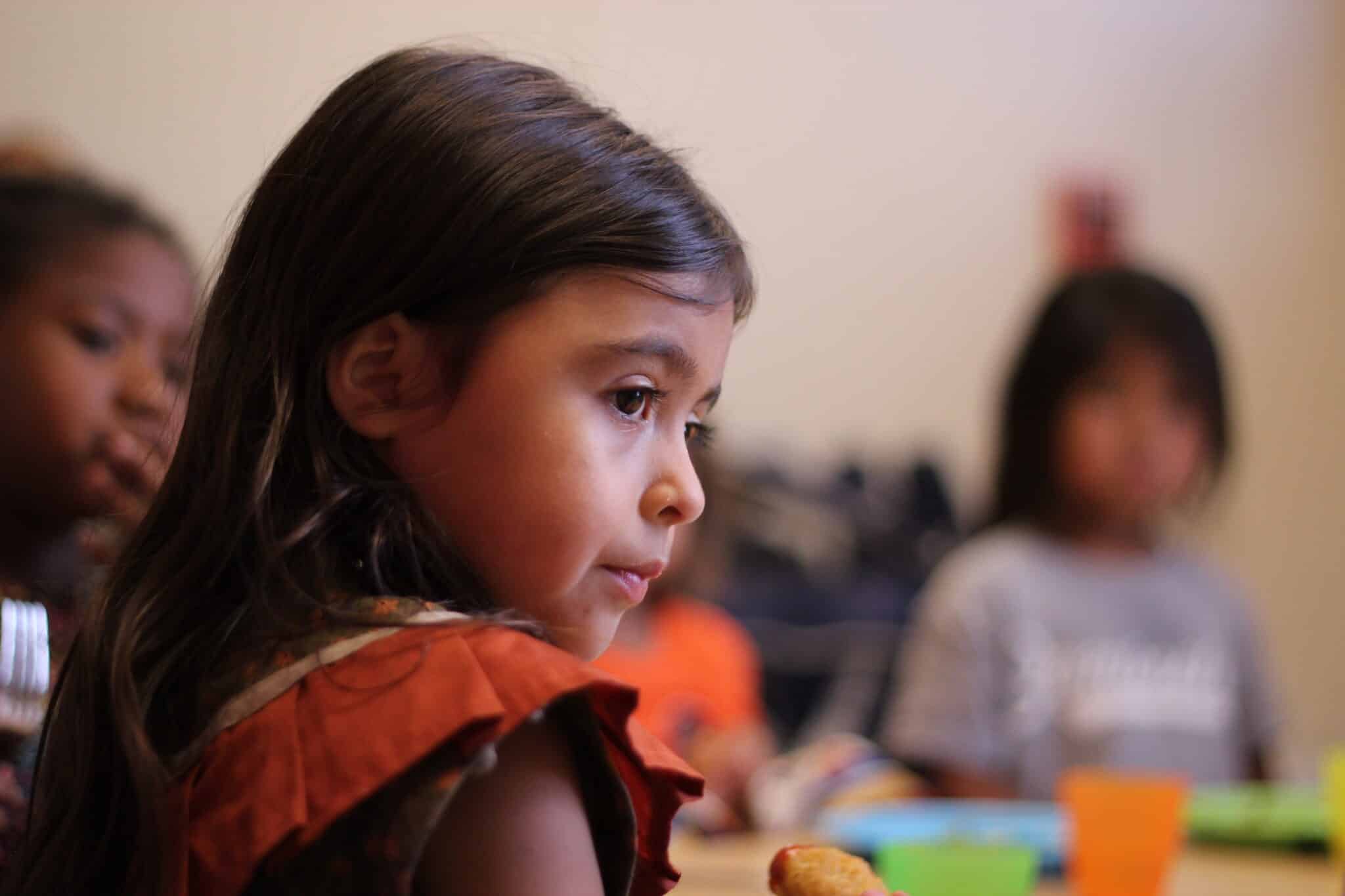
So, what ARE your school options as a Native family? Across America, these are the main types of schools: traditional public-schools, public charter schools, public magnet schools, federally funded Bureau of Indian Education (BIE) schools, tribally controlled schools, private schools, online schools, homeschooling, and microschooling. Choosing any of these options is considered exercising school choice.
For many Native families, another important form of choice in education is tribal choice. Tribal choice is the ability of a particular tribe to self-determine and create a learning opportunity that is derived from and reflects the tribal community. The tribal choice is collectively determined by tribes, tribal leadership, and tribal stakeholders. Although tribal choice is creating a learning environment that best fits “their” particular community, parents and guardians must decide what works best for their student.
Even if there is not a tribal choice school near you, keep in mind that some tribes have education departments that support tribal members with language immersion programs, career training, and other learning opportunities outside of the traditional classroom format. There is a legacy of educational sovereignty being used to form survival schools that place Indigenous culture at the center of learning.
Traditional public schools, including public schools on reservations:
Just as the vast majority of students in America attend public schools, the vast majority of Native students attend traditional public schools. Many Native students live in rural areas, with fewer private and charter school options located nearby. A 2019 study found that about 60% of Native students surveyed attended public schools where less than 25% of all students in the school were Native.
Bureau of Indian Education Funded and Operated Schools:
While most public schools are run by school districts, about 8 to 9% of Native students attend schools run by the government’s Bureau of Indian Education (BIE), an agency, within the Department of Interior, that was established to provide educational services per the federal government’s trust responsibilities for Native students. It currently funds and operates 55 elementary and secondary schools, which can be searched on the Bureau’s website.
BIE funded, tribally-controlled schools:
While some BIE schools are directly operated by the BIE – these are referred to as Bureau Operated Schools – the majority of BIE-funded schools today are controlled by tribes. These schools are divided into two types: “638 schools” in reference to Public Law 93-638 where school services such as transportation, operations, and administration are contracted and schools under Public Law 100-297 which are fully tribally controlled schools. Many of these schools offer curriculum and instruction specially designed to pass on Native culture and values. One parent at a tribally-run public school described that her sons, “get to go outside and practice archery. They get to tan the hides that they make, make drums, work directly in the garden and be present.”
A few of these BIE schools are boarding schools, which offer a unique opportunity to learn. While most Indian boarding schools closed by the early 1990s, a few remain, such as Santa Fe Indian School, run by the 19 pueblos in New Mexico, which provides an option for students to engage with Native students from other communities to learn and share with one another.
You can read about transfer options for public schools near you in the Guide to Open Enrollment.
Like traditional public schools, charter schools are public, free, and usually have no requirements for entry. What distinguishes charter schools is that they have extra freedom to innovate with learning methods. Many have a specific curricular focus, which may include Native American culture and language. Charters are accountable to authorizing entities for results.
As of 2017, there are 64 charter schools that either operate on tribal lands or, even if they are not on tribal lands, serve a significant proportion of Native students. In total, these charter schools serve nearly 10,000 students.
Most of these charter schools are independent, not part of a large charter network. These stand-alone charter schools may be authorized by independent charter boards, local education agencies, state education agencies, or even a college or university. These policies vary state-to-state, and details can be found in the Ultimate Guide to Public Charter Schools.
Some of these charter schools have specific missions to preserve Native American culture and language. For instance, the Native American Community Academy in New Mexico, which is a charter school authorized by Albuquerque Public Schools, teaches students Lakota, Navajo, Tiwa, Keres, and Zuni languages, Indigenous art, Native literature, and Indigenous history. It also provides a community-based education model that connects students to their tribal communities and identities.
Charter schools are a valuable free option for Native students in some regions, and more charter schools may be on the horizon for families.
“For decades, tribes and Native communities have been striving to create school systems that are reflective of the tribal community’s needs, enable tribes to own responsibility for the development of their students, and empower communities to educate their students consistent with their values. As a result, we welcome the renewed discussion of choice in education and look forward to engaging to make sure that tribes and Native communities and leaders have full authority to lead choice as it plays out for Native students.”
National Indian Education Association
For a more in-depth framework about the expansion of Native charter schools in the United States, see the National Indian Education Association’s “Sovereignty in Education: Creating Culturally-Based Charter Schools in Native Communities” handbook and Capacity-Building Guide for Founding Native American Charter Schools, a publication by the National Indian Education Association and the National Charter School Resource Center.
Magnet schools are public schools operated by school districts (or groups of school districts) that allow kids to focus on a specific learning track, such as STEM, medical science, or performing arts.
There are a few magnet schools dispersed throughout America specifically geared toward providing an American Indian perspective and immersing students in Indigenous culture. These include the American Indian Magnet School in Minnesota and PS 19 Native American Magnet School in New York.
Though both magnet schools, charter schools, and district schools are all public schools, parents should note that magnet schools are directly run and controlled by the school district whereas and charter schools have their own oversight structures and varying degrees of autonomy from district control.
Online schools hold the potential to open doors wide for students living on rural reservations, or just in remote areas off reservations. Full-time online schools are available in 35 states. You can read more about online schools near you in the Ultimate Guide to Online School.
Unfortunately, statistics are not readily available for the number of Native American students who currently use online schools, but the number of students overall using online school has surged since pre-COVID.
Private schools are nonpublic schools that charge tuition. Private schools may offer families a unique curriculum, smaller class sizes, or a faith-based tradition.
As of 2018, just .03% of students at private schools of the National Association of Independent Schools were Native American. While only a small number of Native students currently attend private schools, more opportunities are developing. For example, Santa Fe, New Mexico has opened the first independent school for Native American girls, the Pine Ridge Girls’ School, grounded in Lakota philosophy and practice.
“Today, some Native American tribes manage private schools that teach their children their tribal culture and language. Some proficiently own and operate large and small businesses that benefit the tribe. Many manage natural resources in a way that protects the environment and economically supports the tribe. Several states have passed laws that require or encourage public schools to teach Native American content in all subject areas. Montana specifically has “Indian Education for All” in the state constitution as a result of young Native American high school students who stood up to the state legislature. Native American music, dance, art, ceremonies, and stories continue to grace the lives of the people who originated on this land. Yes, we face challenges, but we also persevere.”
Jennifer Jilot, Flathead Indian Reservation in Montana
Many private schools that are not necessarily Native-run and focused but have opened up increased opportunities for Native students to attend. Schools such as the Indian Community School in Wisconsin are accessible and inclusive.
As with online learning, there has been a rise in homeschooling across all demographics since the COVID-19 pandemic. Homeschooling is the process of parents educating children in the home, and many families choose to collaborate via tutorials, co-operatives, and extracurricular leagues to enhance the home education experience.
For Native families, there is also a level of exercising sovereignty at play in making the decision to center Indigenous teaching and learning in the home. Native American knowledge, pre- and post-European contact, was held, engaged, and passed in the community and tribally-based ways that may not be included in traditional schools. Homeschooling may be the choice for parents who want to ensure their kids are immersed in culture and, recognizing that they are the best teachers for their children, will opt to practice that sovereign right.
There is not currently a national Native homeschool group, but there are Facebook groups that share information and tips, such as Indigenous Homeschoolers. Some members of this group express that they homeschool to be able to share Native American history and culture more completely with their child than is possible through traditional schooling.

Some Native families have found a home in microschooling. Microschools or learning pods refer to students gathering together in a small group – with adult supervision – to learn, explore, and socialize. Microschools can take a variety of shapes and legal forms, from homeschoolers coming together at an enrichment center to a private school committed to small classrooms.
In San Carlos, Arizona, a private, Prenda-style microschool became the first microschool on tribal land. “Microschools are so small and mobile they are easy to bring to children in rural areas and communities like ours,” described Dassa John, a parent and member of the San Carlos Apache Tribal community.
At the Lower Elwha Klallam Tribe’s reservation in Washington during the pandemic, a learning pod developed to provide support for students using online learning. Besides working on traditional schooling, students participating in the pod had the chance to practice the Klallam language each day with one of the tribe’s language instructors.
If you are interested in starting a microschool or learning more, head over to the 50-State Guide to Microschooling and Mix-and-Match Learning.
Native American Education Laws and Resources Near You:
Currently, there are 35 states with federally recognized tribal nations, plus an additional 11 states with state-recognized tribes. The states with the highest populations of Native American students include Alaska, Arizona, New Mexico, Oklahoma, South Dakota, North Dakota, and Montana, though Native people once inhabited all 50 states in the U.S. Through forced removal and genocidal practices, Native Nations and tribes no longer exist in many states, and have been relocated to states in which they did not originally reside.
Some states, especially those serving the largest populations of Native students, have developed unique curricula, laws, or programs to respond to the needs of Native students. Keep in mind that statistical information may not fully reflect students that identify as Native American because of blood quantum and membership policies, as well as data collection/census means.
Find a sampling of laws and resources in your state below:
Click on your state:
Alabama:
Alabama’s Calcedeaver Elementary School in Mobile County is one of the only schools in the state serving a majority of Native students. There are no Bureau of Indian Education schools in this state.
Starting in 2024, eligible Native students may be eligible for the state’s new Alabama’s Tax-Credit Education Savings Account (ESA) program, which allows families to receive a portion of their child’s public education funding to put toward personalized learning, such as private or online school expenses, tutoring, or educational therapy.
As of 2022, there are more than 6,000 Native students in Alabama making up just under 1% of the public school population, with a heavy concentration in Madison County. The 1838 Forced Removal Act drove many Cherokee, Chickasaw, and Choctaw people out of the state.
Alaska:
Alaska has a Native American Education Program that supports supplemental education programs to benefit Alaska Natives.
Alaska also has a number of programs and even a few immersion schools allowing students to learn native Alaskan languages. For example, College Gate Elementary in the Anchorage school district offers a Yupik Immersion Program. Meanwhile, Qarġi Academy is the only tribal school on Alaska’s North Slope. And, the Knik Cultural Charter School opened in Wasilla last school year to provide flexible, indigenous education for all grades K-12. There are no Bureau of Indian Education schools in this state.
In 1994, the state passed the Alaska Native Educational Equity, Support, and Assistance Act, recognizing the unique educational needs of Native families and providing for new programs and enrichment. A bill signed into law in 2022 established a pilot program for five tribes to open new independent schools, with their own curriculum and schedule, over the next few years. According to the Alaska Department of Education and Early Development, “These State Tribal Education Compact Schools (STECs) would be public schools open to all students and would offer a unique, culturally rich combination of Western and millennia-old tribal educational models.”
As of 2022, there are more than 28,000 Native students enrolled in public schools in Alaska, making up about 22% of the public school population.
Arizona:
Arizona has an Indian Education Association that researches and provides resources for Native students, as well as an Office of Indian Education at the Arizona Department of Education. Arizona schools are required to teach about the history of Native communities in the state.
The Grand Canyon State has a robust array of options for Native students. There are more than 50 Bureau of Indian Education-operated schools and tribally-controlled schools. For example, one of the Bureau of Indian Education schools is Salt River Elementary, which blends learning and the O’Odham and Piipaash cultures. Meanwhile, Akimel O’Otham Pee Posh Charter School on the Gila River Indian Community was recently awarded more than $500,000 to support reading and mitigate the impact of the pandemics for students and their families.
Arizona also has magnet schools, including Puente de Hózhó (PdH) Public Magnet School, a magnet school in Flagstaff with a Navajo Immersion Language Program. And, the state even has a private Catholic school aimed at preserving Native American culture, St. Charles Apache Mission School in San Carlos.
In Arizona, students who live on a Native reservation are eligible for the state’s Empowerment Scholarships Account (ESA) program, which allows families to receive a portion of their child’s public education funding to put toward personalized learning, such as private or online school expenses, tutoring, or educational therapy. Currently, more than 100 families on the San Carlos reservation lands use ESAs each year.
As of 2022, there are more than 47,000 Native students enrolled in public schools in Arizona, making up about 4% of the public school population.
Arkansas:
Arkansas’ American Indian Center is a non-profit that works on improving the quality of life for Native Americans in Arkansas, including Native students.
Some Native students are eligible for the state’s new Educational Freedom Account (EFA) program, which allows families to receive a portion of their child’s public education funding to put toward personalized learning, such as private school tuition.
As of 2022, there are more than 2,900 Native students enrolled in public schools in Arkansas, making up close to 1% of the public school population. There are no Bureau of Indian Education schools in this state.
California:
California’s initiatives to promote Native education include California Indian Education for All, a nonprofit that aims to help schools improve their teaching and resources surrounding Native history and culture. Additionally, the California Indian Education Act, signed in 2022, encourages school districts to increase collaboration with local Native tribes.
California has a few schools that predominantly serve Native American students. These include Sherman Indian High School, an off-reservation boarding high school in Riverside, All Tribes American Indian Charter School in Valley Center, Barona Indian Charter School in Lakeside, and Anahuacalmecac International University Preparatory in Los Angeles.
As of 2022, there are more than 23,000 Native students enrolled in public schools in California, making up close to 1% of the public school population. For more information, families can also explore the –California Department of Education’s list of American Indian Education Centers.
Colorado:
You can read about Colorado’s resources for Native education at the Colorado Department of Education page.
Unfortunately, one of Colorado’s schools with a unique focus on teaching Indigenous culture and values, the American Indian Academy of Denver, recently closed. However, Ute Mountain Ute Tribe offers education options for their students, as does the South Ute Indian Montessori Academy.
Additionally, Native American Culture and Education (NACE), a program of the Denver Public Schools District, connects and supports about 1,000 Native students in the Denver area. Similarly, Jefferson County School District has an Indian Education program offering mentoring, after-school programming, and cultural support.
Families should also know that, as of 2023, Native students are guaranteed the right to wear their traditional regalia at school graduation ceremonies.
As of 2022, there are more than 5,200 Native students enrolled in public schools in Colorado, making up close to 1% of the public school population. There are no Bureau of Indian Education schools in this state.
Connecticut:
Connecticut‘s tribal nations and education officials are currently partnering to develop a Native American studies curriculum, which will be offered in public schools starting in the 2023-2024 school year.
The Mohegan Tribe also offers free Native American study resources and tools (printable study guides, worksheets and video assets available) for educators and homeschoolers.
As of 2022, there are more than 1,500 Native students in Connecticut making up close to 1% of the public-school population. There are no Bureau of Indian Education schools in this state.
Delaware:
The Nanticoke Indian Center in Delaware is the historic site of a former tribal school. Today, there are no Bureau of Indian Education schools in this state.
As of 2022, there are more than 560 Native students enrolled in public schools in Delaware, making up just under 1% of the public school population.
Florida:
Florida requires that Native education be taught in schools. The state has at least a few tribally-run schools, such as Ahfachkee School in Clewiston and Miccosukee Indian School in Miami.
The Florida Governor’s Council on Indian Affairs, Inc. provides two-week educational programs for Native youth. Also, the Florida Department of Education has launched student contests for Native American Heritage Month.
As of 2022, there are more than 5,700 Native students enrolled in public schools in Florida, making up just under 1% of the public school population.
All Native students are eligible to apply for Florida’s expanded Education Savings Account (ESA) program, which allows families to receive a portion of their child’s public education funding to put toward personalized learning, such as private school tuition or homeschooling.
Georgia:
There are no Bureau of Indian Education schools in this state.
Some Native students may be eligible for the state’s new Promise Scholarship program, which allows families to receive a portion of their child’s public education funding to put toward personalized learning, such as private school tuition.
As of 2022, there are more than 3,500 Native students enrolled in public schools in Georgia, making up close to 1% of the public school population.
Hawaii:
Hawaii has a Native Hawaiian Education program to develop and support educational options for Native Hawaiian students. The state has several Hawaiian language immersion schools, including Ānuenue in Honolulu, King Kekaulike High in Pukalani, and Molokai Middle School. Some of the state’s immersion schools are charter schools. A complete list can be found at Hawaii’s Department of Education.
Kamehameha schools have a unique history as a privately-funded school system for furthering culture and academics for Native Hawaiian students.
You can also read about the Native Hawaiian Education Act at the Native Hawaiian Education Council. This bill officially authorized increased support for the needs of Native Hawaiian students and increased participation from Native communities in planning educational programming.
You may also wish to check out the Native Hawaiian Education Association, a nonprofit that works to support Native Hawaiian educators and learning.
As of 2022, there are more than 43,000 Native students enrolled in public schools in Hawaii, making up well over 25% of the public school population.
Idaho:
Idaho has a couple of tribally-run schools, such as Coeur d’Alene Tribal School in DeSmet. In 2022, this school was the spot of an official announcement by federal education representatives of a $1 million federal grant to promote Native American languages across the country. Another tribally-run school in Idaho is Shoshone Bannock School District #537 in Pocatello. Additionally, the state’s first Native language immersion school is a charter school, Chief Tahgee Elementary Academy on the Fort Hall reservation.
The state’s Indian Education Department works with local tribes to support the learning of Native students.
In some Idaho districts, such as the Blackfoot School District, Native students have been particularly impacted by learning loss and the effects of the COVID-19 pandemic. The school district is working on a recovery program, which has involved tutoring programs for tribal students and credit recovery programs.
As of 2023, there are more than 3,100 Native students enrolled in public schools in Idaho, making up more than 1% of the public school population. There are currently 56 Native teachers, making up just 0.3% of all teachers, in Idaho public schools.
Illinois:
Illinois does not have any Bureau of Indian Education schools. But, in the Chicago Public Schools District, Native families can receive support through the American Indian Education Program and the American Indian Family Resource Center. Services include after-school tutoring and cultural programs for students, as well as workshops for parents.
A recent bill passed by state legislators and expected to be signed into law requires Illinois public schools to teach Midwestern Native American history beginning in 2024. The new curriculum would be developed in partnership with the Chicago American Indian Community Collaborative.
As of 2022, there are more than 3,700 Native students enrolled in public schools in Illinois, making up close to 1% of the public school population.
Indiana:
In Indiana, the Native American Indian Affairs Commission makes recommendations to government agencies about issues impacting Native families, including education. You may also wish to check out the American Indian Center of Indiana.
There are no Bureau of Indian Education schools in this state.
As of 2022, there are more than 2,000 Native students enrolled in public schools in Indiana, making up close to 1% of the public school population.
Native families interested in choosing private school may wish to learn about Indiana’s recently expanded private school scholarship programs.
Iowa:
Iowa has at least one tribally-run school, Meskwaki Settlement School. It is run by the Sac and Fox Tribe of the Mississippi in Iowa, the only federally recognized Indian tribe in the state.
As of 2022, there are more than 1,500 Native students enrolled in public schools in Iowa, making up close to 1% of the public school population.
Some Native students are eligible for the state’s new Educational Scholarship Account (ESA) program, which allows families to receive a portion of their child’s public education funding to put toward personalized learning, such as private school tuition.
Kansas:
Kansas has at least one tribally-controlled school serving Native students: the Kickapoo Nation School in Powhattan.
Kansas also has a statewide organization, the Kansas Association for Native American Education, that advocates for Native students.
As of 2022, there are more than 3,400 Native students enrolled in public schools in Kansas, making up close to 1% of the public school population.
Kentucky:
Kentucky’s Heritage Council offers educational resources for teachers and families about Native history and culture.
There are no Bureau of Indian Education schools in this state.
As of 2022, there are more than 660 Native students enrolled in public schools in Kentucky, making up close to 1% of the public school population.
Louisiana:
Louisiana has at least one tribally-run school, Chitimacha Tribal School in Jeanerette.
The state has an Office of Indian Affairs that serves as a resource for Louisiana Native communities navigating local or state policies. Additionally, the Tunica-Biloxi tribe offers tribal student support programs for tutoring and school success.
As of 2022, there are more than 4,300 Native students enrolled in public schools in Louisiana, making up close to 1% of the public school population.
Maine:
Maine has a few schools specifically serving Native students. These include Indian Island School in Indian Island, Indian Township School in Princeton, and Sipayik Elementary School in Calais. You can read about all three at Maine Indian Education.
In 2001, Maine passed a law requiring Native history and culture be taught in schools across the state. A 2022 report by Wabanaki leaders highlights successes and failures of how the curriculum is currently being implemented in schools.
Maine’s Department of Education provides a list of educational Native Studies resources. You may also wish to check out the Maine Indian Tribal Commission.
As of 2022, there are more than 1,300 Native students enrolled in public schools in Maine, making up close to 1% of the public school population.
Maryland:
There are no Bureau of Indian Education schools in this state. Some districts offer special support and programming for Native students, like the Montgomery School Public Schools District, which has an American Indian Education Program.
You may also wish to check out the Baltimore American Indian Center (BAIC), which provides skills training, afterschool programs, and other opportunities for Native families.
As of 2022, there are more than 2,600 Native students enrolled in public schools in Maryland, making up close to 1% of the public school population.
Massachusetts:
Massachusetts has no Bureau of Indian Education schools, but other educational opportunities exist. For example, the Mashpee Wampanoag Tribe has an education department offering cultural presentations, after school support, Native films, performances, and even traditional gardens in collaboration with nearby schools. The programming is funded by the Department of Education.
You may also wish to check out the Massachusetts Center for Native American Awareness, which provides cultural enrichment for youth and other educational opportunities.
As of 2022, there are more than 1,800 Native students enrolled in public school in Massachusetts, making up close to 1% of the public school population.
Michigan:
Michigan has a few schools specifically serving Native students. These include Hannahville Indian School in Wilson and Joseph K. Lumsden Bahweting Anishnabe PSA in Marie. About a dozen public school districts in Michigan are close to tribal territories and have significant Native enrollment; at Watersmeet Township School, for example, three out of four students are Native.
Legislation to add more Native history into the state’s recommended curriculum standards for grades 8-12 passed in 2022 and is currently being implemented. The Michigan Department of Education has also launched an Indigenous Education Initiative to work on areas impacting Native learners. Beginning in 2024, all Michigan district and charter schools must collect tribal affiliation data for students, with the goal of gaining more information about Native student achievement rates and making more schools eligible for federal funds for Native American education.
As of 2022, there are more than 8,600 Native students enrolled in public school in Michigan, making up close to 1% of the public school population.
Minnesota:
Minnesota’s TrekNorth Junior & Senior High School is a charter school serving a high percentage of Native students and offering classes in American Indian language and culture. Minnesota also has a few tribally-run schools through the Bureau of Indian Education, including Bug-O-Nay-Ge-Shig School in Bena, Circle of Life Academy in White Earth, Fond du Lac Ojibwe School in Cloquet, and Nay Ah Shing / Pine Grove Schools in Onamia.
Some traditional public-school districts, like Minneapolis Public Schools, have an Indian Education Department. Minnesota even has a magnet school, American Indian Magnet School, with teachers specializing in the Lakota and Ojibwe languages, and a Catholic private school aimed at preserving Native culture, St. Mary’s Mission School.
The American Indian OIC in Minneapolis provides community-based support for Native families. One of its initiatives is an alternative high school, Takoda Prep, affiliated with Minneapolis Public Schools. Takoda Prep focuses on individualized instruction, skills training, and supporting students in maintaining a strong connection to their culture.
As of 2022, there are more than 14,000 Native students enrolled in public school in Minnesota, making up more than 1% of the public school population. You can read a report on the state of American Indian Education at the Minnesota Department of Education.
Mississippi:
Mississippi has several tribally-run schools through the Bureau of Indian Education. These schools make up the Choctaw Tribal School System, which serves more than 2,000 students across eight schools. Operated by the Mississippi Band of Choctaw Indians, this is the largest unified and locally-controlled Indian school system in the U.S.
As of 2022, there are also more than 880 Native students enrolled in public school in Mississippi, making up close to 1% of the public school population.
Native students with special needs may be eligible for the state’s Equal Opportunity for Students with Special Needs Program, which provides funding that families can use for private school tuition.
Missouri:
There are no federally recognized tribes in the state of Missouri and there are no Bureau of Indian Education schools in this state.
Missouri does have an American Indian Cultural Center. Also, MO Humanities has a Native American Program with educational programming to raise awareness about the American Indian experience in Missouri.
As of 2022, there are more than 3,500 Native students enrolled in public school in Missouri, making up close to 1% of the public school population.
Native families who meet certain eligibility requirements may be eligible for the Missouri Empowerment Scholarship Accounts Program, which allows families to receive a portion of their child’s public education funding to put toward personalized learning, such as private school tuition.
Montana:
Montana became the first state, in 1999, to require Native studies. The state’s constitution says that Montana “recognizes the distinct and unique cultural heritage of American Indians and is committed in its educational goals to the preservation of their cultural integrity.” Currently, however, some Native tribes, parents, and students in Montana are bringing a lawsuit forward, arguing that this constitutional requirement is not being upheld. A bill passed in 2023 establishes a partnership between state education officials and Montana tribes with the goal of better reporting on Indian Education for All curriculum.
Montana also has a few schools specifically serving Native students. These include the tribally-run Northern Cheyenne Tribal School in Busby, and Two Eagle River School in Pablo.
Montana also has a few private Catholic schools with instruction in Native language and culture. These schools, which are largely funded by fundraising and private donations, include St. Labre Indian School in Ashland, St. Charles Mission School in Pryor, Pretty Eagle Catholic Academy in Xavier, and De La Salle Blackfeet School in Browning.
As of 2022, there are more than 15,900 Native students enrolled in public school in Montana, making up more than 10% of the public school population.
Nebraska:
Nebraska has a Commission on Indian Affairs that provides regular updates on Indian education news in the state. Lincoln Public Schools’ Indian Education Team is funded by a federal grant and offers many programs for Native students and their families, including success coaches, summer camps, and a Native advisory committee that parents can participate in.
Nebraska offers several schools that seek to preserve Native culture, including Umoⁿhoⁿ Nation Public Schools St. Augustine Mission School in Winnebago and the iSanti Community School, located on ISanti Sioux tribal lands.
There are no Bureau of Indian Education schools in this state.
As of 2022, there are more than 4,900 Native students enrolled in public school in Nebraska, making up more than 1% of the public school population.
Nevada:
Nevada has a few tribally-run schools, including Pyramid Lake Schools and Duckwater Shoshone Elementary Schools.
The Nevada Indian Commission offers events and news for Native families. Additionally, the Nevada Department of Education offers a list of resources for Native education, including curriculum and lesson plans.
As of 2022, there are more than 3,800 Native students enrolled in public school in Nevada, making up close to 1% of the public school population. More than 900 Native students are served by the Washoe County School District. The district is currently using a federal grant to hire more student graduation advocates to support Native students in becoming college and career ready.
New Hampshire:
There are no federally recognized tribes in New Hampshire today and there are no Bureau of Indian Education schools in this state.
The state does have a Commission on Native American Affairs to promote the needs of Native families. You may also wish to check out New Hampshire’s list of Native organizations with geographical or cultural interests in New Hampshire.
As of 2022, there are more than 330 Native students enrolled in public school in New Hampshire, making up less than 1% of the public school population.
Native families who meet certain eligibility requirements may be eligible for New Hampshire’s Education Freedom Account, which allows families to receive a portion of their child’s public education funding to put toward personalized learning, such as private school tuition.
New Jersey:
While there are federally recognized Indian tribes in New Jersey, there are no Bureau of Indian Education schools in this state.
New Jersey’s Commission on Indian Affairs seeks to develop “programs and projects to further understanding of New Jersey’s American Indian history and culture.”
As of 2022, there are more than 2,700 Native students enrolled in public school in New Jersey, making up close to 1% of the public school population.
New Mexico:
New Mexico requires Native education be taught in schools. The NM Indian Education Act of 2003 established partnerships between Native tribes and the state’s education department to advance the educational and cultural needs of American Indian students in public schools, and a 2019 amendment to this law added a systemic framework for improving educational outcomes for Indian students.
In New Mexico, the Early Childhood Education and Care Department has worked with local indigenous leaders to create a digital workshop for tribal communities to develop their own instructional content. Additionally, New Mexico’s Indian Affairs Department has an Indigenous Youth Council that Native students from across the state participate in.
There are more than 40 Bureau of Indian Education-operated schools and tribally-controlled schools across the state.
One of the state’s schools that offers an immersion in Indigenous curriculum and culture is the Native American Community Academy, a public charter school in Albuquerque. Another school committed to maintaining Native cultural values is the Santa Fe Indian School, which is currently working to better connect tribes and students through reliable internet access. In Farmington, Navajo Preparatory School (the only Navajo-sanctioned, college-preparatory school for Native Americans) offers an International Baccalaureate curriculum. New Mexico even has a private Catholic school with the mission of serving Native students: St. Joseph Mission School in San Fidel.
As of 2022, there are more than 32,000 Native students enrolled in public school in New Mexico, making up more than 10% of the public school population. In Albuquerque Public Schools, for example, more than 7,000 students report tribal affiliations.
New York:
While there are federally recognized tribes in New York, there are no Bureau of Indian Education schools in this state. There are, however, several schools that teach Native youth, including Onondaga Elementary in Syracuse and Tuscarora Indian School near Buffalo.
The New York State Education Department has a Native American Education Unit that provides funding to school districts that educate Native children who live on reservations. In 2023, the New York State Education Department created an Indigenous Culture and Language Studies certificate for teachers, with the goal of allowing more children to learn about Native cultures.
As of 2022, there are more than 17,700 Native students enrolled in public school in New York, making up close to 1% of the public school population.
North Carolina:
North Carolina has a few schools specifically serving Native students. These include the tribally-run Cherokee Central Elementary School, Middle School, and High School.
Additionally, Haliwa-Saponi Tribal School is run by the Haliwa-Saponi Tribe and offers students academics integrated with Native culture.
North Carolina’s State Advisory Council on Indian Education aims to provide cultural opportunities for American Indian students. Also, the North Carolina Native American Youth Organization offers cultural and academic support to students.
In light of a bill passed in 2023, Native students are now guaranteed the right to wear their traditional regalia at school graduation ceremonies.
As of 2022, there are more than 16,900 Native students enrolled in public schools in Missouri, making up more than 1% of the public school population.
Native students with special needs may be eligible for the state’s Education Student Accounts program, which allows families to receive a portion of their child’s public education funding to put toward personalized learning, such as private school tuition.
North Dakota:
North Dakota, where about 10% of students are Native American, has passed a law requiring that public schools teach Native history. You can learn more about the North Dakota Native American Essential Understandings curriculum at Teachings of Our Elders.
North Dakota has one of the highest numbers of schools serving Native students. You can find a complete list of public-school options for Native students at the North Dakota Indian Affairs Commission. Some of these schools are operated by tribal governments (including the Standing Rock Sioux Tribe, the Mandan, Hidatsa, Arikara Nation, the Turtle Mountain Band of Chippewa, and the Spirit Lake Nation) and some are operated by the Bureau of Indian Education. The list includes schools both on reservation and off reservation.
As of 2022, there are more than 9,700 Native students enrolled in public school in North Dakota, making up more than 8% of the public school population.
Ohio:
There are no federally recognized tribes in Ohio and there are no Bureau of Indian Education schools in this state. You may wish to search your area for Native educational programming near you. Regional organizations like the Greater Cincinnati Native American Coalition and Native American Center of Central Ohio work to preserve Native culture and offer learning opportunities.
As of 2022, there are more than 1,600 Native students enrolled in public schools in Ohio, making up close to 1% of the public school population.
Oklahoma:
Oklahoma’s Department of Education has an Office of American Indian Education that works to build bridges between Native tribes and the state’s K-12 public school system.
In Anadarko, Riverside Indian School is a school run by the Bureau of Indian Education that specifically serves Native students. It is the oldest and largest off-reservation boarding school in the U.S. There are also four tribally-run schools: Chickasaw Children’s Village, Eufaula Dormitory, Jones Academy, and Sequoyah High School.
Oklahoma also allows federally recognized Indian tribes to authorize charter schools in the state. In 2010, Tsalagi Tsunadeloquasdi became the first Oklahoma charter school for Cherokee language immersion. Sovereign Community School was the second Native charter school to open in the state, but permanently closed its doors in 2023.
Additionally, the state has passed legislation establishing Native education advisory councils to ensure that tribal nations have a say in how public education responds to the needs of students. The state has also recently passed legislation protecting the right of Native students to wear tribal regalia during graduation ceremonies.
According to the Oklahoma Department of Education, there are more than 130,000 Native students attending Oklahoma public schools.
Oregon:
Oregon has passed a bill requiring the Oregon Department of Education to create Native curriculum for public schools and provide related professional development to teachers. The official state website offers a robust list of Native educational resources, including curriculum, newspapers, and organizations. One of these organizations is the Oregon Indian Education Association, which works with school districts to promote Indigenous knowledge in public education.
Oregon has at least one Bureau of Indian Education school serving Native students, the Chemawa Indian School in Salem.
As of 2022, there are more than 6,900 Native students enrolled in public school in Oregon, making up more than 1% of the public school population.
Pennsylvania:
There are no Bureau of Indian Education schools in this state. However, there are cultural resources for Native families, such as the Lenape Nation of Pennsylvania, a nonprofit organization dedicated to promoting awareness of the culture and language of the Lenape people.
As of 2022, there are more than 3,300 Native students enrolled in public school in Pennsylvania, making up close to 1% of the public school population.
Rhode Island:
One of the Indian tribes in Rhode Island is the Narragansett Tribe. The tribe’s education department collaborates on many educational opportunities for Indian children, such as academic tutoring and workshops.
There are no Bureau of Indian Education schools in this state.
As of 2022, there are more than 960 Native students enrolled in public school in Rhode Island, making up close to 1% of the public school population.
South Carolina:
The SC Commission for Minority Affairs has a Native American Affairs Division that promotes Native culture, especially through celebrating Native American Heritage Month in November.
There are no Bureau of Indian Education schools in this state.
Native students may be eligible for for the state’s education scholarship program, which allows families to receive a portion of their child’s public education funding to put toward personalized learning, such as private school tuition.
As of 2022, there are more than 2,300 Native students enrolled in public school in South Carolina, making up close to 1% of the public school population.
South Dakota:
In South Dakota public schools, Native students are the largest minority group. The state has approved a framework for teaching Native studies called the Oceti Sakowin Essential Understandings and Standards. Over the past five years, Native legislators have repeatedly proposed the creation of public charter schools that immerse students in Lakota Indian language and culture, but so far, no measure has been passed.
Along with North Dakota, South Dakota has one of the highest numbers of schools serving Native students. Schools operated by the Bureau of Indian Education include Cheyenne-Eagle Butte School, Flandreau Indian School, and Pine Ridge School.
There are well over a dozen tribally-run schools, including American Horse School, Crazy Horse School, Crow Creek Tribal School, Enemy Swim Day School, Isna Wica Owayawa (Loneman School), Little Eagle Grant School, Little Wound School, Lower Brule Schools, Marty Indian School, Pahin Sinte Owayawa School (Porcupine School), Pierre Indian School Learning Center, Rock Creek Grant School, St. Francis Indian School, Takini School, Tiospa Zina Tribal School, Tiospaye Topa School, and Wounded Knee District School.
Some public school districts, like the Sioux Falls School District, seek to support Native students with special senior honoring ceremonies.
South Dakota also has a few private schools aimed at preserving Native culture, like St. Joseph’s Indian School, Red Cloud Indian School and the new Oceti Sakowin Community Academy.
The South Dakota Indian Education Advisory Council was developed in 2004, and the Indian Education Act was passed in 2007 to support educational opportunities for Native families. You can learn more at the South Dakota Department of Tribal Relations.
There are also numerous non-profits serving Native families in South Dakota. For instance, the Native American Heritage Association provides food and supplies for Native families in need.
As of 2022, there are more than 14,700 Native students enrolled in public school in South Dakota, making up more than 10% of the public school population.
Tennessee:
Tennessee has a Native American Indian Association, a statewide nonprofit organization that works to promote educational options and awareness of Indian culture.
Specific Native tribes also offer their own educational programming. For instance, the Kituwah Preservation & Education Program works to revitalize the Cherokee language and promote awareness about the Cherokee people.
There are no Bureau of Indian Education schools in this state.
As of 2022, there are more than 2,000 Native students enrolled in public school in Tennessee, making up close to 1% of the public school population.
Native students who meet certain requirements may be eligible for the state’s Education Student Accounts programs, which allows families to receive a portion of their child’s public education funding to put toward personalized learning, such as private school tuition.
Texas:
In 2023, the Texas Education Agency approved an elective course for high schoolers on American Indian history and culture. Some Texas public school districts offer other special resources and learning opportunities geared toward Native families. For instance, Fort Worth Independent School District has an American Indian Education Program and offers a list online of suggested curricula, texts, and materials.
Additionally, there are state organizations and nonprofits that offer youth learning opportunities. For example, the Indigenous Cultures Institute hosts summer encounters and other youth programming for Native students in Texas and northern Mexico.
There are no Bureau of Indian Education schools in this state.
As of 2022, there are more than 16,500 Native students enrolled in public school in Texas, making up close to 1% of the public school population.
Utah:
Utah’s Board of Education has an American Indian Education program to promote opportunities for Native families. The program funds grants for school districts with a high concentration of Native students.
Utah offers many state resources to promote awareness of Indigenous culture, such as the Utah Education Network’s American Indian Resources.
Native students may be eligible for for the state’s education scholarship program, which allows families to receive a portion of their child’s public education funding to put toward personalized learning, such as private school tuition.
The state has at least one Bureau of Indian Education school serving Native students, the Aneth Community School in Montezuma Creek, and one Navajo school, Richfield Residential Hall. In 2013, Navajo Nation and the state entered into an agreement to share student performance data with the aim of improving students’ transitions between public schools and Bureau of Indian Education schools.
As of 2022, there are more than 6,900 Native students enrolled in public school in Utah, making up more than 1% of the public school population.
Vermont:
Vermont has a Commission on Native American Affairs that works to empower the Native families in the state. Vermont’s Abenaki communities also offer educational programming. For example, the Nulhegan Abenkai Tribe has coordinated heritage days at schools and cultural workshops.
There are no Bureau of Indian Education schools in this state.
As of 2022, there are more than 250 Native students enrolled in public school in Vermont, making up close to 1% of the public school population.
Virginia:
Virginia requires that Native education be taught in schools. The state’s Department of Education offers learning resources about Native culture.
Virginia does not have any Bureau of Indian Education-funded schools.
As of 2022, there are more than 3,700 Native students enrolled in public school in Virginia, making up close to 1% of the public school population.
Washington:
Washington has a tribally-developed curriculum, Since Time Immemorial: Tribal Sovereignty in Washington State, that is used by public-schools across the state.
The Washington State Indian Education Association works to improve educational opportunities for Native students, and the Governor’s Office of Indian Affairs offers a tribal directory.
Many public school districts offer unique learning opportunities for Native students, such as in Seattle Public Schools District, Spokane Public Schools, Bethel School District, and Peninsula School District. Grand Coulee Dam School District’s Lake Roosevelt Schools have an expanding Indian Education Program that gives students the opportunity to learn about root digging, traditional drumming, Native American literature, and more.
The state also has several tribally-run schools. These include Chief Leschi Schools in Puyallup, Lummi Nation School in Bellingham, Muckleshoot Tribal School in Auburn, Paschal Sherman Indian School in Omak, Quileute Tribal School in LaPush, Wa He Lut Indian School in Olympia, and Yakama Nation Tribal School in Toppenish.
In 2015, the Washington State-Tribal Education Compact Schools affirmed and empowered tribes to increase educational opportunities for Native students.
As of 2022, there are more than 11,900 Native students enrolled in public school in Washington, making up more than 1% of the public school population.
West Virginia:
There are no federally recognized Indian tribes or Bureau of Indian Education schools in this state.
The American Indians of West Virginia group works to promote Native heritage across the state through teaching activities and events.
As of 2022, there are more than 250 Native students enrolled in public school in West Virginia, making up under 1% of the public school population.
Many Native students are eligible for the state’s Hope Scholarship, which allows families to receive a portion of their child’s public education funding to put toward personalized learning.
Wisconsin:
Wisconsin requires all public school districts to provide instruction on the state’s tribal nations. The state also lists resources related to American Indian education, which include the Wisconsin Indian Education Association. Additionally, Wisconsin First Nations provides educational videos and lesson plans for all grades about Native studies.
There are at least three tribally-run schools in Wisconsin: Lac Courte Oreilles Ojibwe School in Hayward, Menominee Tribal School in Neopit, and Oneida Nation School. In 2022, the Menominee Indian School District opened a pre-K and kindergarten charter school called Kaehkēnawapatāēq, where students practice the Menominee language.
As of 2022, there are more than 8,200 Native students enrolled in public school in Wisconsin, making up about 1% of the public school population.
Wyoming:
Wyoming requires the history and culture of Native tribes in Wyoming to be included in public-school standards.
Wyoming’s Department of Education provides a robust list of Native resources, including Open Range Wyoming, a collection of free educational resources for schools, and Wind River Education Project, lessons and videos about Eastern Shoshone and Northern Arapaho people.
Wyoming has at least one tribally-run school, St. Stephens Indian School, funded by the Bureau of Indian Education. Additionally, Wyoming Indian Schools serve families on the Wind River Reservation.
As of 2022, there are more than 2,800 Native students enrolled in public-school in Wyoming, making up more than 3% of the public school population.
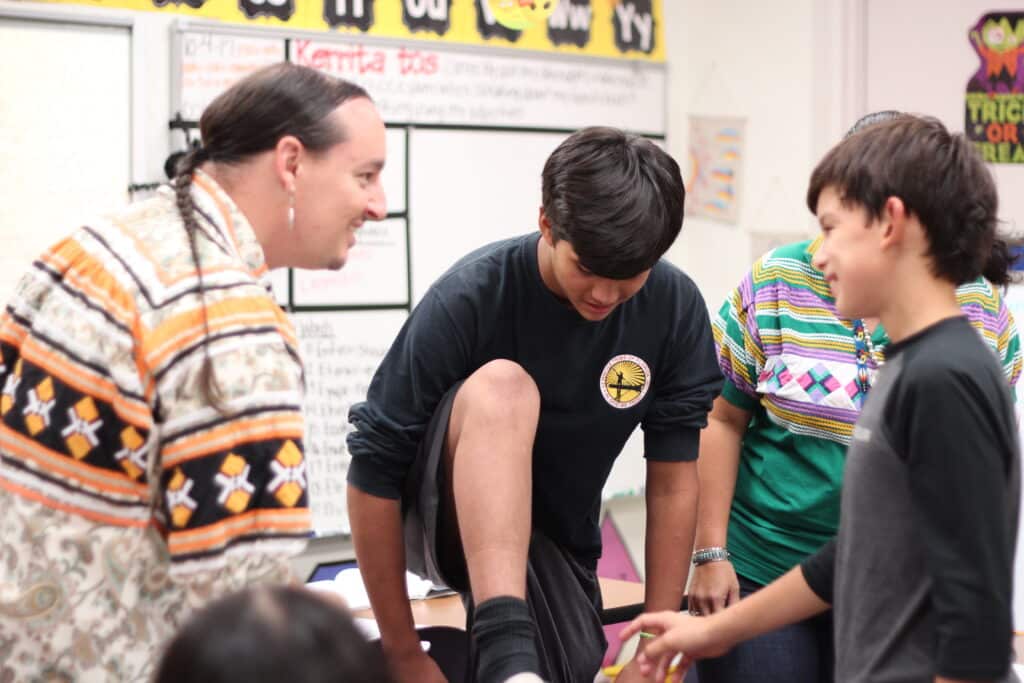
Ultimately, the best educational choice for your unique student is a decision up to you.
As you school-search, keep in mind that learning in an environment that bolsters your Native heritage does not have to end with high school. There are 37 tribal colleges and universities in the country, such as the Northwest Indian College, which serves Washington, Oregon, and Idaho.
To learn more about educational opportunities for Native families, here is a list of additional organizations and resources you may wish to check out:
- Administration for Native Americans: The Administration for Native Americans promotes self-sufficiency for Native communities by supporting grants for community-based projects.
- American Indian Catholic Schools Network: Affiliated with the Alliance for Catholic Education, the American Indian Catholic Schools Network is a coalition of private Native schools representing the Acoma, Blackfeet, Laguna, Lakota, Navajo, Ojibwe, Omaha, San Carlos Apache, and Winnebago Indian tribes.
- American Indian Education Fund: The American Indian Education Fund (formerly the American Indian Education Foundation) is a program geared toward high school students and their families. It offers scholarships, literacy programs, and school supplies for college.
- American Indian Science and Engineering Society: The American Indian Science and Engineering Society encourages Native students to pursue STEM education and careers. The organization offers internships, conferences, leadership development, and other programming.
- Bureau of Indian Education: The Bureau of Indian Education’s mission is to provide quality educational opportunities to Native students in accordance with tribal needs for cultural well-being.
- Center for Native American Youth: The Center for Native American Youth is a national education organization that supports and advocates for Native young people.
- Education for Parents of Indian Children with Special Needs: Education for Parents of Indian Children with Special Needs is a non-profit that supports and advocates for families of Native children with disabilities, developmental delays, special healthcare needs, or who are deaf or hard of hearing.
- Indian County Today: Indian County Today is an independent, non-profit news enterprise covering tribes and Native people throughout America. Search “education” at the site for recent education news and developments.
- Indigenous Homeschoolers: Indigenous Homeschoolers is a private Facebook group with more than 1,200 members. The group is open to all Indigenous families looking for support and ideas about homeschooling their children.
- National Congress of American Indians: The National Congress of American Indians (NCAI) was founded in 1944, making it the oldest American Indian and Alaska Native organization “serving the broad interests of tribal governments and communities.” One of the policy issues the NCAI focuses on is education.
- National Museum of the American Indians’ Native Knowledge 360: A project of the Smithsonian, the National Museum of the American Indian’s Native Knowledge 360 offers educational resources on Indigenous culture for a variety of grades. It also offers professional development opportunities for teachers.
- National Indian Education Association (NIEA): National Indian Education Association’s mission is to advance educational opportunities for American Indians, Alaska Natives, and Native Hawaiians. The NIEA furthers this mission through digital resources, webinars, events, supporting schools in building Native Language programs, and much more.
- National Indian Education Study 2019: This in-depth study of Native fourth-graders and eighth-graders around the country provides information about how school teachers and administrators play a part in preserving students’ cultural heritage.
- National Indian Head Start Directors Association: The National Indian Head Start Directors Association is an organized voice for Indian Head Start programs and the Native families they serve.
- National Indian Impacted Land Association: The National Indian Impacted Land Association advocates for nearly 600 Indian land school districts, including work to address facility needs.
- National Johnson O’Malley Association: The National Johnson O’Malley Association is a nonprofit for discussing educational excellence for Indian students and advocating the rights of Indian students.
- Native American Heritage Month: Officially designated in 1990, November is celebrated as National American Indian Heritage Month or Native American Heritage Month. Google Arts and Culture offers 10 ideas for celebrating the month.
- Native Hope: Native Hope shares Native stories and offers educational resources to support Native communities.
- Native News Online. One of the “most-read daily American Indian news publications,” the Native News Online has an education section dedicated to developments in K-12 and undergraduate educational opportunities for Native students.
- Society for the Advancement of Chicanos/Hispanics & Native Americans in Science: This organization is dedicated to the success of Chicanos/Hispanics and Native students in attaining advanced degrees, careers, and positions of leadership in STEM. It offers members an online network, among other opportunities.
- Tribal Education Departments National Assembly: The Tribal Education Departments National Assembly seeks to provide resources and support to tribes in reclaiming sovereignty in education.
- White House Tribal Nations Summit 2022: During the November-December 2022 White House Tribal Nations Summit, many announcements impacting Native families were made. Find a full list of initiatives, including several impacting K-12 education, at the White House website.
The information in this guide is designed to help Native families in the K-12 decision-making process. Our mission is to provide families with the information they need about all the school options available – traditional public, public charter, public magnet, private, online, at home, and microschooling – so they can choose the right fit for their child. Read more guides about choosing schools.

